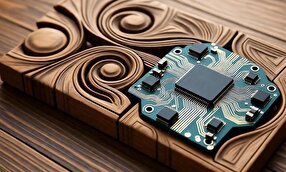Iran Accelerates Development of Micro Technologies

Microelectronics is one of the important and strategic subfields of electronic engineering that deals with the design and manufacture of electronic components and circuits on a micrometer scale. This field forms the infrastructure of many new technologies such as smartphones, sensors, medical equipment, smart cars, aviation systems, and Internet of Things devices. With the growing need for smart and energy-efficient equipment, the importance of developing and indigenizing microelectronic technologies in developing countries, including Iran, has increased more than ever.
In recent years, Iran, relying on domestic technological capacities, specialized universities, and knowledge-based companies, has taken serious steps towards the development of this key technology. Focusing on fabless design, the production of smart sensors, the development of medical diagnostic systems, and support for microelectronics-based industries are among the priorities that have been considered in the country's technology roadmap last year.
The strategic importance of microtechnology in economic, industrial, defense, and social development has made this field a priority for various countries since this technology is important in various sectors such as transportation, health, agriculture, energy, defense, etc. It continues to create significant added value and is a solution to overcome industrial and social challenges.
In Iran, planning to expand this technology began in the 1990s with the establishment of specialized headquarters, the entry of industries into the production of parts, and the training of human resources. This technology, by optimizing industrial processes, energy management, and improving health services, in addition to providing the necessary infrastructure to achieve the country's digital and economic goals, reduces dependence on foreign technologies and creates a suitable position in the field of digital transformation.
The activities undertaken last year in Iran related to each of the microelectronics focus areas are the design and development of semiconductor chips, as well as for the integration of mechanical and electronic elements in automotive, medical, and instrumentation applications, self-powered monitoring systems and devices for smart surveillance, printed electronics for flexible circuits, and bedside diagnostic tests for medical services.
4155/v





















